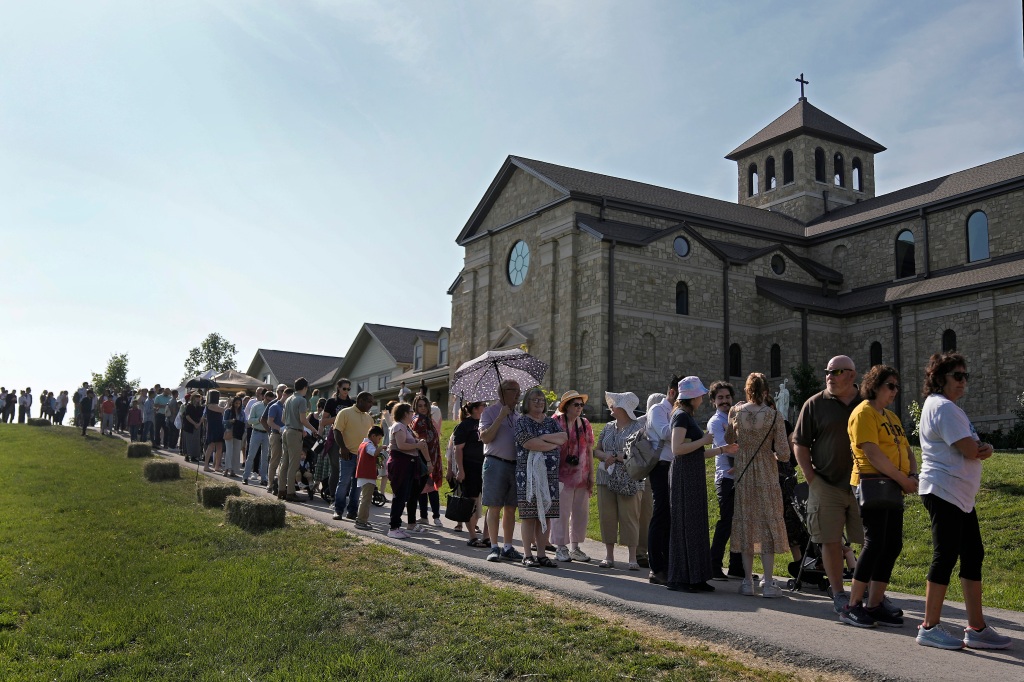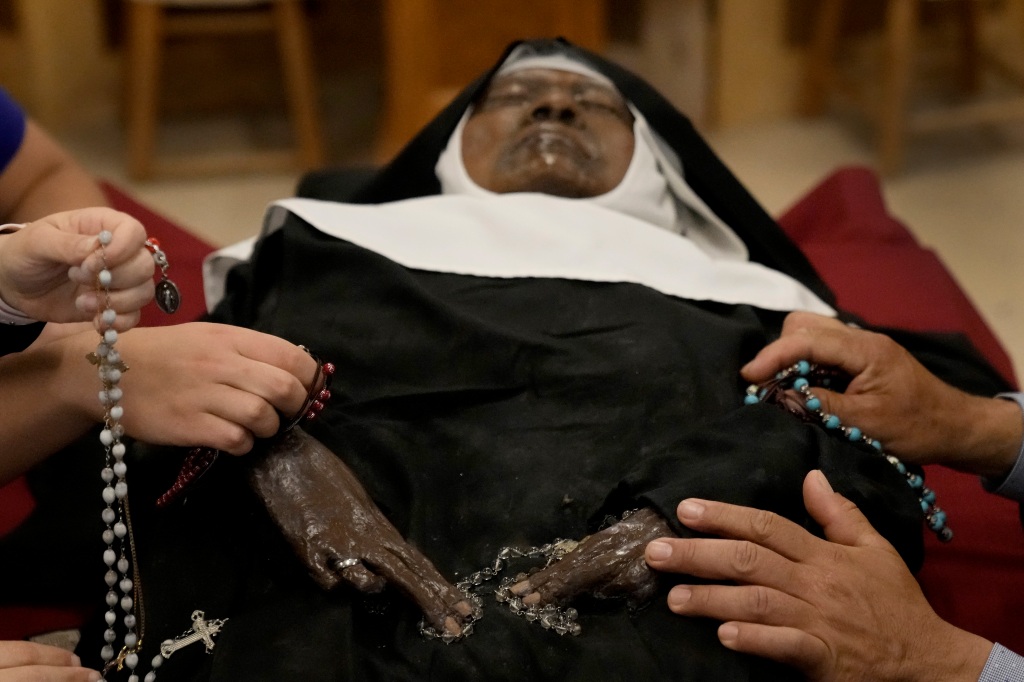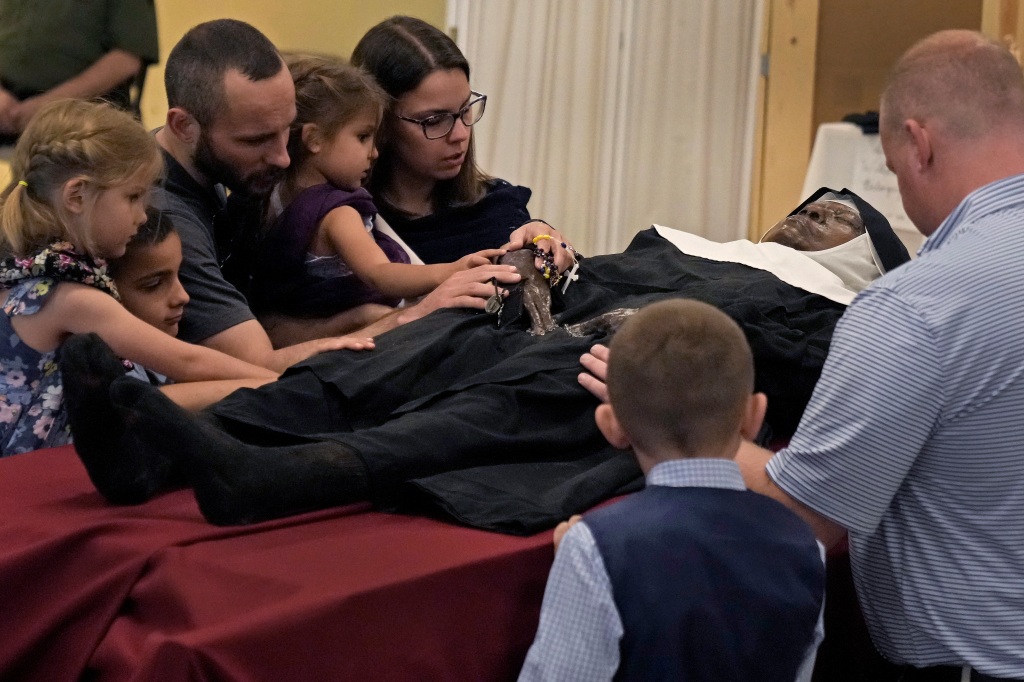Thousands flock to see body of ‘miracle’ nun Sister Wilhelmina Lancaster
A nun whose exhumed body showed nearly no signs of decomposition four years after she died is drawing thousands of Catholics hoping to witness the alleged “miracle” to the sister’s rural Missouri monastery.
The visitors are coming from all over the country to see and touch the body of Sister Wilhelmina Lancaster, who died at age 95 in 2019 and was exhumed in April with her body and clothing still intact.
Between 10,000 to 15,000 worshippers were expected to visit the chapel of the Benedictines of Mary, Queen of Apostles in Gower, a small town 40 miles north of Kansas City, each day over Memorial Day weekend, Clinton County Sheriff Larry Fish said in a Facebook video.
The nun’s body was coated in a protective wax and displayed inside the chapel as travelers touched her face and prayed over her.
Her remains — which were initially exhumed to be put in a new shrine — will be placed in a glass case on Monday.
Local officials said they expect visitors to continue making the pilgrimage from as far as Canada and Mexico for several months.
Fish said the rural area’s gravel roads weren’t designed to serve that level of traffic.
“We are going to put a very large pressure on our infrastructure that is not designed for it,” he said.
Local police created a mobile command center to deal with the size of the crowds in the town of just 1,8000 people, and additional land was cleared for more parking spaces near the monastery, according to FOX4 Kansas City.
Samuel Dawson came with his son from Kansas City to see Lancaster’s body last week.

“It was pretty amazing,” he said. “It was very peaceful. Just very reverent.”
Lancaster was buried in a simple wooden coffin without any embalming four years ago, according to a statement from the Benedictines of Mary, Queen of Apostles.
When the Benedictine nuns exhumed their founder last week, they expected to find bones in her coffin but were instead shocked to see her fully intact body and “a perfectly preserved religious habit.”
The nuns had hoped to keep their discovery private, but an internal email about the matter was posted online and the news spread and soon made headlines.
Many Catholics believe that Lancaster’s lack of decay is a miracle and that she could be a modern-day saint.
“It just felt like the presence of God was there as soon as I went into the monastery. It’s a true miracle. I really think that,” Rita Cospelich, a visitor from Blue Springs, Missouri, told FOX4. “God works in strange ways with miracles.”
However, the Diocese of Kansas City-St. Joseph has approached the reported science-denying matter with caution.
“The condition of the remains of Sister Wilhelmina Lancaster has understandably generated widespread interest and raised important questions,” the diocese said. “At the same time, it is important to protect the integrity of the mortal remains of Sister Wilhelmina to allow for a thorough investigation.”

“Incorruptibility has been verified in the past, but it is very rare. There is a well-established process to pursue the cause for sainthood, but that has not been initiated in this case yet,” the diocese added.
The process to investigate sainthood can only begin five years after a person’s death, and Lancaster has only been dead four years, the Benedictines of Mary, Queen of Apostles, also said.
Scientists are also weary of the supposed miracle.

Human remains decay at different rates depending on a number of variables and a lack of decomposition even years later isn’t all too rare, according to Rebecca George, an anthropology instructor at Western Carolina University in North Carolina.
“Typically, when we bury people, we don’t exhume them. We don’t get to look at them a couple years out,” George said. “With 100 years, there might be nothing left. But when you’ve got just a few years out, this is not unexpected.”
With Post wires
Read the full article Here


